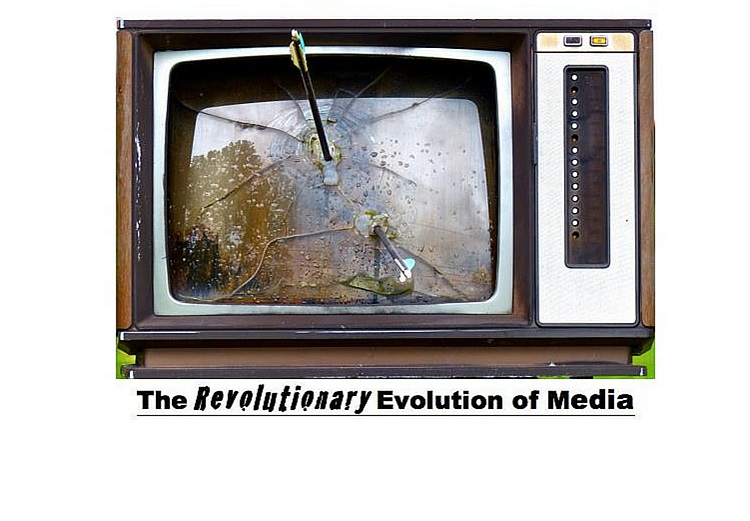TREotM: Content in the 21st Century -- Upending Distribution

Chapter 12, Part 2
This is a book in progress. Go here to read it from the beginning.
The close of the 20th Century saw the beginning of the rush online. Plenty of pundits predicted falling skies … but nobody quite understood the real ramifications of that rush to online.
Indeed, as the 21st Century debuted, content – that is, news, information, novels, videos, voices, music, etc. – was distributed pretty much top down the way it had always been.
Movies were shown on theater screens, repackaged as DVDs and sold through video stores and mail order.
Television shows were broadcast on television, on cable and via satellite.
Books were published and sold via mail order and bookstores.
Magazines were published and mailed and some were also sold at check out counters in groceries and big box stores as well as in some bookstores and concession outlets in airports and other venues.
Newspapers were assembled around classified ads, printed and trucked and shipped pretty near everywhere.
Music was produced and sold on CDs in music stores (once called record stores) and played via terrestrial and satellite radio. Some vinyl records continued to be produced for audiophiles.
Advertising paid for quite a lot of the costs of producing most everything … and billboards, posters, signs and other sorts of media continued proliferating.
“You’ve got mail” dominated the burgeoning online world via AOL … which would, as January arrived, participate in one of history’s biggest merger failures along with Time Warner.
It wasn’t long, however, before information and mail showed signs of moving from the Postal Service – and even the overnight guys – to fax machines and, more slowly, online.
Then Brian Roberts convinced Bill Gates to invest a billion Microsoft dollars in Comcast to help spur the development of high-speed data infrastructure. Bingo, folks. It worked. Cable’s infrastructure was upgraded to a hybrid fiber optic and coaxial system.
Broadband came to cable first and then spread to other means of distribution including DSL (digital subscribe lines) from telephone companies and even to two-satellite systems. Two of the so-called Baby Bells began deploying fiber optics both to the curb (FTTC) and to the home (FTTH). The Baby Bells also began to consolidate; today only two, AT&T (really Southwestern Bell reclaiming the venerable name) and Verizon.
And content got a whole bunch of new homes.
Music moved online … and completely changed the monetary dynamics of the music business. Napster made it easy to “acquire” music instead of “buy” it. Business models began changing.
Motion pictures and television shows became the same: video. Movies migrated online … and got pirated more. TV shows streamed online. BitTorrent arrived and created peer-to-peer networks and therefore the easy pirating of video. Netflix, which originally just distributed movies on CDs by mail, moved aggressively to license more movies as well as old TV shows and then began producing its own. The ability to stream video resulted in new models of viewership including so-called binge watching (viewing a whole season of a series all at once).
Classified ads abandoned newspapers and migrated first to craigslist. Just FYI, craigslist.com originated in San Francisco as an event source and then morphed into classifieds and migrated all the way across the country. Newspapers were caught with only ink on their fingers and failed to recognize the threat. Newspapers around the world shrank as a result. The digital revolution forced all forms of print to experiment with online, internet-based news delivery.
Amazon’s somewhat maniacal concentration on getting things to its online customers quickly resulted in the explosive growth of e-readers from its own Kindle. Old school companies tried to compete with me-too products like the Nook from major book retailer Barnes & Noble. Amazon won that race. The ease of use built into the various Kindle models and Amazon’s growing inventory of books and publications helped fuel explosive growth. From an online bookseller, Amazon now challenges just about every other retailer in the world.
As distribution changed, so did advertising. More on that after we take a look at what content appeared to help drive these changes.
Next week: Chapter 12, Part 3 – The Changing Media Mix
The opinions and points of view expressed in this commentary are exclusively the views of the author and do not necessarily represent the views of MediaVillage/MyersBizNet management or associated bloggers.


